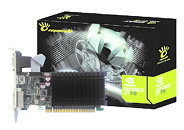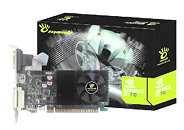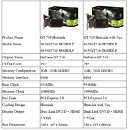Tuesday, January 26th 2016

Manli Announces its GeForce GT 710 Graphics Cards
Manli Technology Group Limited, the major Graphics Cards, Mini-PCs and other components manufacturer, today announced the latest entry level of graphics solution, Manli GeForce GT 710 including Heatsink and Heatsink with Fan versions.
Manli GeForce GT 710 delivers a perfect DirectX 12 API gaming experience, support 3D Vision and high-definition resolution. It is equipped with 1GB & 2GB of GDDR3 memory, 64bit memory controller, memory clock is at 1600MHz, and the default GPU clock appears to be 954 MHz.Meanwhile, Manli GeForce GT 710 also provides up to 80% faster performance than Intel HD graphics in all PC multimedia applications. Now, you can enjoy a rich, and smooth gaming experience.
Manli GeForce GT 710 delivers a perfect DirectX 12 API gaming experience, support 3D Vision and high-definition resolution. It is equipped with 1GB & 2GB of GDDR3 memory, 64bit memory controller, memory clock is at 1600MHz, and the default GPU clock appears to be 954 MHz.Meanwhile, Manli GeForce GT 710 also provides up to 80% faster performance than Intel HD graphics in all PC multimedia applications. Now, you can enjoy a rich, and smooth gaming experience.



34 Comments on Manli Announces its GeForce GT 710 Graphics Cards
Did nVidia just silently adopt AMD pushed freesync technology?
Now I remember reading about it, its turning automatically vsync on and off depending on the framerate.
That name is just confusing.